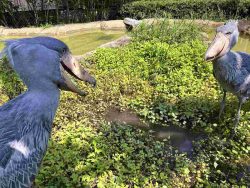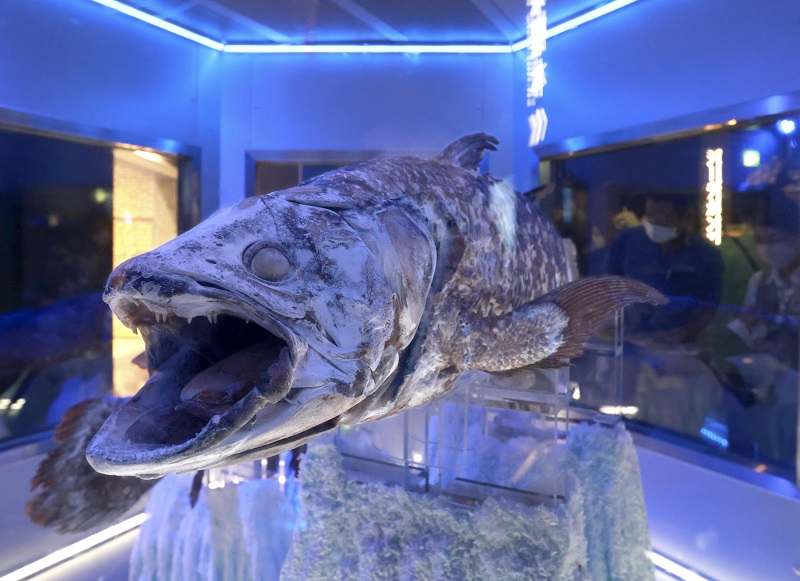
A cryogenically preserved coelacanth sample is exhibited at the Numazu Deep Sea Aquarium, which is the only place in the country to see this type of sample.
14:08 JST, July 23, 2022
NUMAZU, Shizuoka — The Numazu Deep Sea Aquarium is located at a port facing Suruga Bay, the nation’s deepest bay, with depths of up to 2,500 meters, in Numazu, eastern Shizuoka Prefecture.
The facility’s most eye-catching feature is an exhibition of samples of coelacanths. This fish species has survived in the deep seas without having changed its appearance for 350 million years.
The aquarium is Japan’s only facility where visitors can see real samples that are cryogenically preserved. It also stores lots of data to help unlock the mysteries of coelacanths’ biological features.
Coelacanths were believed to have gone extinct 70 million years ago, because only their fossils had been found. But in 1938, a live coelacanth was caught in the sea off East London, South Africa.
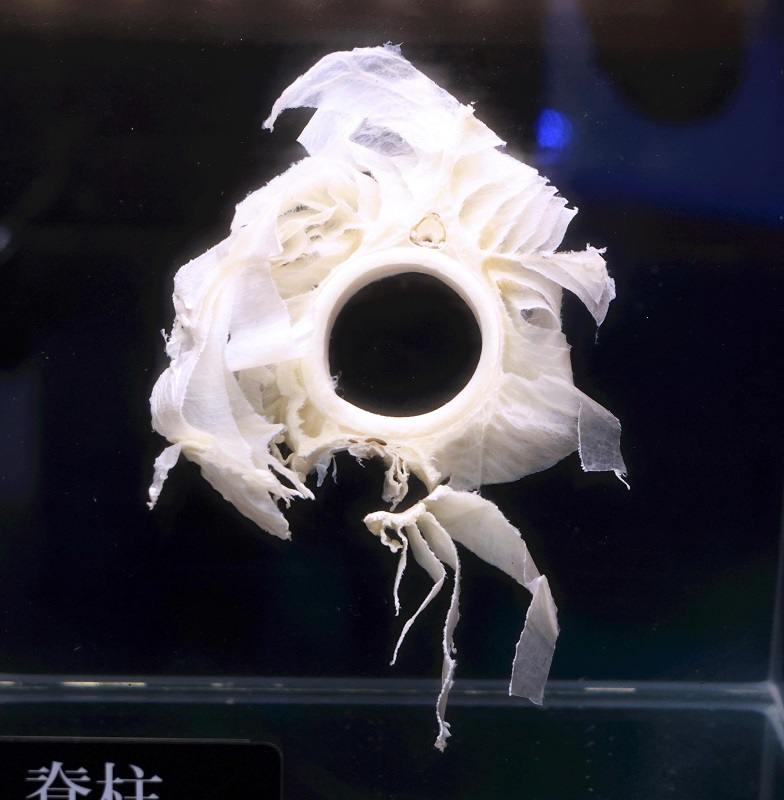
A cross-sectional image of a coelacanth spinal column. The center is hollow, as reflected in the name, which means “hollow bone” in Greek.
The first fish caused a sensation as a great discovery of the century. A museum curator sent sketches of the fish to an ichthyologist, and it was determined to be a coelacanth.
In 1952, a second coelacanth was found in the Comoro Islands to the east of Africa.
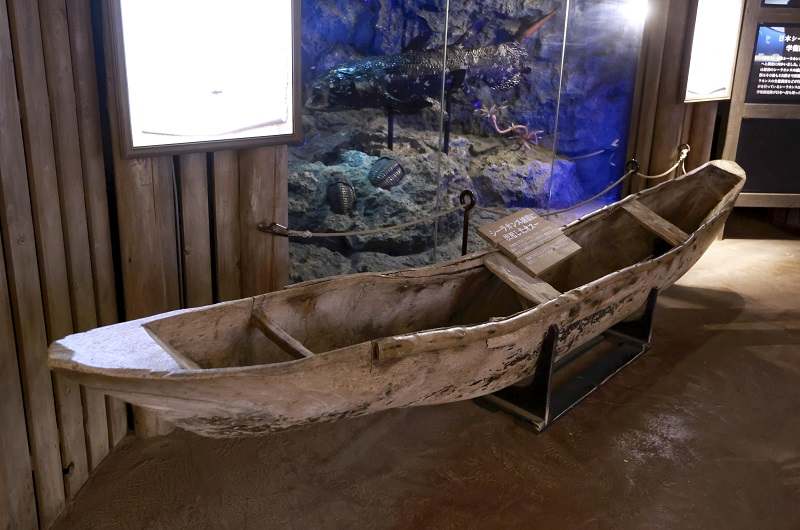
A wooden canoe used by a Japanese scientific research team to capture coelacanths in the Comoro Islands off Africa in the 1980s.
Japan has sent scientific research teams to the discovery sites since 1981 and brought back samples to Japan. The samples exhibited in the aquarium are two cryogenically preserved coelacanths and three stuffed specimens.
Officials of the aquarium said the cryogenically preserved samples are precious in international terms. This is because, in many cases, captured coelacanths were made into stuffed specimens after being anatomized for study.
In the case of the Numazu Deep Sea Aquarium, after research on the samples was finished, a wealthy person acquired them. Aquarium officials asked the person to sell the five samples, so that they would be eye-catching items to exhibit for the opening of the aquarium. The intentions of the two sides matched, as the wealthy person had hoped that all of them would be exhibited in the same place.
The morphology of the captured coelacanths does not largely differ from that found in fossils. Thus, the fish species has been widely called a living fossil.
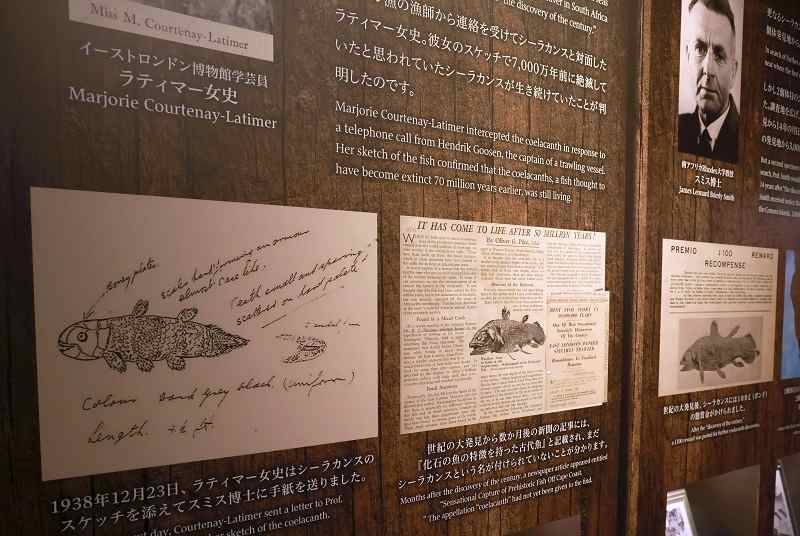
Replicas of sketches and copies of newspapers at the time of the discovery of a coelacanth in 1938
There are still many mysteries about coelacanths. One is that living coelacanths have been found in limited sea areas off Indonesia and Africa, though those deep-sea environments do not differ to a great extent.
Asked “What is the biggest mystery?” Hirotaka Shiozaki, breeding and exhibition manager of the aquarium, replied, “Why could they survive?”
Strikes by meteors and climate change have caused many living species to go extinct, and deep-sea areas were no exception.
Visitors to the aquarium will consider the reasons why lives have been inherited since primeval ages and feel a sense of romanticism about the deep sea.
Numazu Deep Sea Aquarium
Deep-sea creatures from Suruga Bay, adjacent to the aquarium, are exhibited. To avoid stress on the creatures, which had lived in zones so deep that light does not reach, the interior of the aquarium is illuminated with special lighting.
Address: 83 Senbonminatocho, Numazu, Shizuoka Prefecture
Hours: 10 a.m. to 6 p.m. year-round
Admission: ¥1,600 for adults (¥1,500 for 65 or older), ¥800 for elementary to junior high school students, ¥400 for children age 4 or older.
Related Tags
"Features" POPULAR ARTICLE
-

Sanrio to Open Museum in Yamanashi Pref. Dedicated to Founder, Exhibits Include Hello Kitty, Other Characters
-

Autumn Foliage Surrounds Visitors to Tokyo’s Showa Kinen Park
-

My Daughter No Longer Speaks to Me, But I Want to See Her and My Grandchild
-

Kumamoto: Public Bath Refurbished as Library Where You Can Chat, Take Photos
-
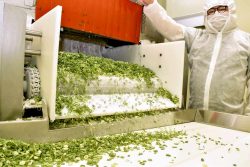
Frozen Vegetables: Demand Rises for Convenient, Tasty Domestic Produce
JN ACCESS RANKING
-

Tokyo Economic Security Forum to Hold Inaugural Meeting Amid Tense Global Environment
-

Keidanren Chairman Yoshinobu Tsutsui Visits Kashiwazaki-Kariwa Nuclear Power Plant; Inspects New Emergency Safety System
-

Imports of Rare Earths from China Facing Delays, May Be Caused by Deterioration of Japan-China Relations
-

University of Tokyo Professor Discusses Japanese Economic Security in Interview Ahead of Forum
-

Japan Pulls out of Vietnam Nuclear Project, Complicating Hanoi’s Power Plans



